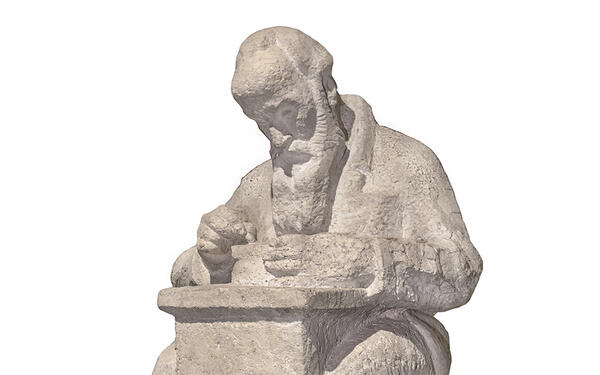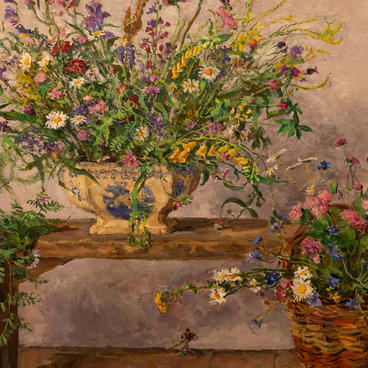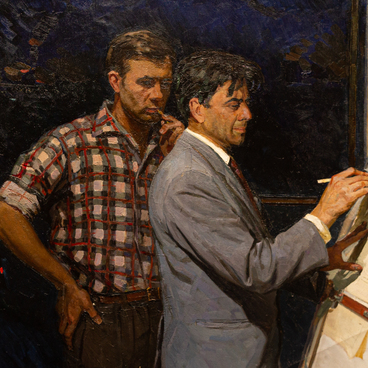Favorsky was fascinated by the idea that art can be an essential element of everyday life and fill it with meaning, pervading every aspect of our life and appearing everywhere: in books, murals, and theatrical decoration. These ideas had their roots in the experience of the Russian avant-garde of the 1910s and in the master’s belief system which was characterized by strong moral principles. Many Soviet artists often turned to his ideas. Among them was sculptor Dmitry Zhilinsky, the husband of Nina Zhilinskaya, who had a close relationship with Favorsky to his last days.
Nina Zhilinskaya portrayed the artist in 1964 — during the last year of his life. In order to create the portrait, she visited his studio. It is very unlikely that Favorsky could pose for a portrait, but their personal acquaintance certainly helped the sculptor to bring to life this heart-warming image. In this statue, Favorsky is shown as a down-to-earth industrious man who is working on his craft surrounded by children. Zhilinskaya opted for generalized shapes without worrying about exact anatomy or thorough detail. Because of that, it is hard to tell what the artist is doing, but we may guess that he is creating book illustrations.
Nina Zhilinskaya is best known as a drawing artist. Her drawings are characterized by a very emotional style: the images seem sketchy; they are angular and far from the academic traditions. She put a lot of time into mastering sculpture, but there are not many statues by Zhilinskaya that are publicly available. Favorsky’s portrait is even less typical of Zhilinskaya: her other statues are defined by metaphors and arbitrary proportions.
By the time of creating this statue, Zhilinskaya was already an experienced artist. She graduated in 1954 and joined the Artists’ Union in 1960. This was only possible for hard-working and prolific artists who participated in exhibitions and took commissions. On the timeline of Zhilinskaya’s creative activities, this statue was made at the end of the first stage of her career, during the first decade of independent work.



